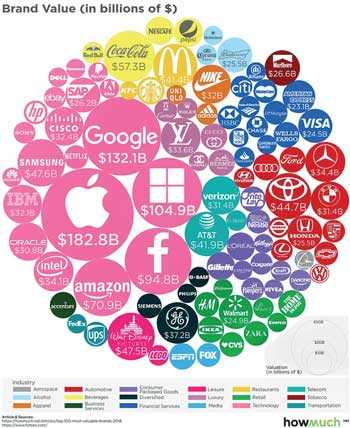Wednesday Dec 31, 2025
Wednesday Dec 31, 2025
Monday, 22 July 2019 00:00 - - {{hitsCtrl.values.hits}}
My earliest childhood memories are of being told beautiful stories. Some stories made me laugh. Some made me cry. But after hearing each story my appetite for them kept on increasing. I would pester members of my family to tell more of them, ones that would tickle the imagination, draw pictures and images in my mind (Technicolor). And many years later I still remember the stories that made the most impact on my life. 
As a child I would hear stories of elephants in Kerala. Each elephant had its own unique tale, their relationship with their mahouts, how they were moody, enjoyed being bathed, had great memories, were loyal and gentle despite being such a giant. And then there were stories of elephants who were mistreated and rebelled. The ones that impacted me most were stories of temple elephants who would mourn the death of their mahouts, tears flowing from their eyes.
As a child living in the city, away from a direct connect with animals, these stories imbibed in me a compassion for them. A sensitivity to their needs, and a certain connection to elephants. To this day I feel engaged with, and a certain affinity to these gentle giants. I respectfully keep away at a safe distance when I see them at national parks. I have a lifelong held sympathy for their plight.
As a teenager, the book Jonathan Livingston Seagull inspired me to accept my own uniqueness and inspired self-belief. The story of the seagull charting a lone yet trail blazing path seemed worthy of emulation. As an adult pursuing a career, I was influenced by the book called ‘Tactics’ by Edward de Bono, the man who wrote lateral thinking, and was the story of the success secrets of big entrepreneurs and rich men. I lapped it all up and employed the mantra of single minded focus as a means of finding career success. All stories have some things on common. They fulfil certain needs. Many successful stories have a universal appeal. They evoke strong emotions. And they tend to have long term impact – either in terms of behaviour change or change in attitudes or shaping of beliefs and or development of personality and points of views.
Unsurprisingly great brands do the same. The best brands fulfil unmet needs, and global ones transcend geography in terms of its appeal. The most effective brand stories cause an emotional impact that leads to some change either in the mindset or the behaviour of consumers either towards the brand or towards the category itself.
Story of a story
One interesting brand example is the ‘story of a story’. The Loch Ness story. It’s the tale that created a wonderful leisure or holiday experience brand. I think the Scottish and the British weave wonderful tales of mystery intrigue and suspense. Build anticipation and boggle the imagination to create desire and longing for the experiences they offer. And they do a wonderful job of curating the experience and of crafting the elements that results in you feeling fulfilled and satisfied at the end of the experience.
And then ones becomes loyal evangelists who happily advocate the experience. The Loch Ness story is the one about the large monster like creature spotted in the lake decades ago. Every few years the monster of the lake would be spotted. And people started flocking to the Loch to see if they could spot it. Every year this story is revived.
I saw an article online dated a month ago where certain kiwi scientists have confirmed the existence of the Loch Ness monster. These wonderful PR stories keep the legend alive. And the lure of the destination grows. If you take away the Loch Ness story, the loch itself, it can be argued, is very average, I think Loch Lomond is more picturesque and beautiful.
Inverness is a far away town not necessarily the best one in the highlands. But by creating and managing the story of Loch Ness monster, the appeal to children (a key target for a holiday experience) and their imagination, the loch itself has become a hot spot selling Nessie memorabilia. And creating strong emotional bonds between children and the monster.
The entire experience done masterfully through a combination of storytelling and visual and moving images of the Loch Ness monster has created in people’s imagination a set of expectations that they are willing to spend extra for the travel to Inverness.
At the end of the day a brand is meant to create intangible affinity that persuades the consumer to see value for the experience. And when they pay premiums for it then the brand is truly in play. In the case of the Loch Ness brand, it has sustained value over time and has generated huge profits for the Scottish economy. What more can you expect from a brand. You can’t get a better story.
Under the Tuscan sun
The second example is also a story of a story. This time a book and the movie ‘under the Tuscan sun’ has created amazing value for Tuscany as a destination. The movie is about a recently divorced woman who then leaves her routine in the US and takes a break under the Tuscan sun and discovers leisure and a great new way of living and a philosophy.
This one movie that portrays the ideal Italian destination – romantic men, idyllic weather, laid back and light hearted lifestyle has tourists from the western world flocking to Tuscany. Obviously the book fulfilled a need in many people living stressful lifestyles to explore a new way more relaxed, a more natural way of life. 
By focusing on something very human – our need for connections – with other people and need for love and honest companionship and by depicting a universal urge to stay in touch with nature. As a brand ‘Tuscany’ epitomises – laid back, sunny weather, chilled out and a warm and fussy human place. And all this means tired westerners are flocking here on holidays for relief. The emotional benefit of relief and comfort and connection justifies the premium pricing. And that means sales, profits loyalty and advocacy. Wow. What a story. What a brand.
But does this apply to non-service brands? Both above examples are of ‘stories about stories’. Are there any from the staple brands we know. The answer to that is a resounding ‘Yes’.
A brand right here in Sri Lanka. 16 years ago this brand was telling a story of ‘heritage’ at a time when the key category triggers were taste and nutrition. And was languishing at a 5% market share. It was stagnant at that share for over 10 years. We told a new story. This story talked directly to the main consumer – the housewife.
We told the story of a housewife who was assertive and aware, one who was in charge, and was crystal clear about her family’s needs. When it came to making purchase decisions she was the boss. She could never be fooled as she knew the true value of things she bought. We gave her a name and made her an aspirational character. The rest of the story is history. The brand transformed and in 16 years is the market leader in the category. The story we created worked. It fulfilled the need in the housewife to be appreciated for her tireless work. And by placing her on a pedestal she started noticing the real benefits this brand offered and started shifting to it.
Our storytelling touched a basic human need – the one to be rewarded and appreciated and at the same time the universal appeal of ‘true value’ built differentiation for the brand. The strong emotional connection was the pride we generated among users. This example is one of a simple story that created a big brand.
A brand in India which I managed used to tell another very simple but very effective story. Of a young girl who would do things like play the floor piano with grace or ‘DJ’ in a party and would often prompt viewers to speculate which college she is from only to reveal a little child call out ‘mummy’ much to the surprise of the viewers who would then speculate on the secret for her young skin. The answer of course is the brand.
This story in various forms has been the pillar around which this now Rs. 50 billion brand was built. The story appeals to a large segment of people who would love to be mistaken for someone younger. The universal need to be younger and the emotion of joy at the compliments it evokes, have all resulted in creation of a valuable brand that has increased its appeal from province to province in India in the last 30 years, and is now a national brand of huge repute. But fundamental to its success is a simple story well told and told without change for many years.
What is your brand story?
So this raises the question for all of us as brand custodians – what’s your brand story?
Is it clear, unambiguous and easily relatable – an acid test for efficacy is can you tell this story without using jargon and unnecessary technical stuff? Robust brand stories are generally easy to say in three four sentences. If you can’t do that with your brand story maybe it’s too complicated a story and needs to be simplified.
What need does it fulfil? Is it an unmet need? Does your story feel weak or strong? Does it sound unique? Or too common? Get your gut feel on it? Check with people with experience working with the target consumer on their views but addressing an unmet need with a great story could be your answer to brand transformation.
Does your story evoke emotion? Will your target consumer be joyous, inspired, excited, happy, or any other describable clear emotion? If not, chances are your story will be weak in memorability and bringing about change in beliefs or attitudes.
Is there a universal appeal in your story? The best stories tend to have universal appeal. There are many locally relevant ones that connect locally and can arguably build regional brands but the ones that transcend to a universal quality has best potential of creating global franchises.
The story will have facets depending on the consumer journey in the category – some at awareness stage could be more emotional, some facets could be more hard hitting and ‘in your face’ at point of purchase but it should all tie in to a larger clearly told story that will build value for your brand making it more profitable.
So my only question to all is – what’s your next story going to be?